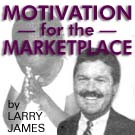

…inequality removes hope from the hearts of children.
Jonathan Kozol writes tough books about the condition of America's educational system as it relates to people living in poverty. Kozol is not fun to read. In Savage Inequalities, Kozol sketches the horrid conditions facing poor children who attend public schools in several large American cities. He contrasts conditions in nearby suburban public schools. Among other things Kozol concludes that persistent, systemic inequality removes hope from the hearts of children.
In his most recent book, Amazing Grace, Kozol quotes a minister who lives and works in one of New York City’s poorest neighborhoods:
Of course the family structure breaks down in a place like the South Bronx! Everything breaks down in a place like this. The pipes break down. The phone breaks down. The electricity and heat break down. The spirit breaks down. The body breaks down. The immune agents of the heart break down. Why wouldn’t the family break down also?
“Family values” continues to be a hot topic these days. But, very few analysts address the direct connection between the breakdown of families, the loss of family values and the economic and social destruction of inner city communities. Most of the residents of urban neighborhoods find themselves caught in a frustrating downward spiral created by a lack of marketable skills; the absence of jobs that pay a livable wage; the challenge of transportation; the escalating price of decent housing; a cut back in available social services, including job training, child care and health services; and the sub-par performance of their children in school. Most of the social pundits who look askance at parents who live in America’s “ghettos” simply don't understand the severe pressures and unbearable tensions created by poverty, unemployment and what might be called “technological retardation.”
Everyone talks about problems these days. What about solutions? Strengthening the social fabric surrounding the families who live in the inner cities of America should be a top priority for a nation as concerned about “family values” as ours claims to be, don’t you think? I’ll offer two absolutely essential ingredients for accomplishing the task.
- Raising the ceiling on wages for under-skilled, non-technical laborers. A year ago we created a small landscape business to employ inner city residents. We began our second year in April. During our first year, we paid the men and women who worked for us an average of $5.00 per hour. We faced a problem with motivation all year. Frankly, the quality of our work wasn’t the best either. This year we started by paying our workers more. Our lowest wage earner receives $7.00 an hour. Our crew remains highly motivated. During off hours, they distribute flyers about our business! Our business is moving because our employees can see the outlines of a better life for themselves. Hope is essential when it comes to “lifting people.”
- Involving business leaders and entrepreneurs in every aspect of inner city community life, especially economic development and public education. Just before his retirement earlier this year, Sandy Kress, immediate past president of the Dallas School Board, called on business leaders to devote themselves and the resources of their companies to improving the city’s schools. Public/private partnerships will be essential to the future health of our communities institutions. Entrepreneurs need to discover the benefits, the real advantages of doing business and building businesses in the inner cities of America. Last year Michael E. Porter, a professor at Harvard Business School, published an essay in the Harvard Business Review entitled “The Competitive Advantage of the Inner City” (May-June 1995, pp. 55-71). In his intriguing article Porter outlines the real advantages of doing business in inner city locations. The late Jim Rouse exemplifies a successful business leader who recognized the exciting opportunities for profitable investment in inner city neighborhoods. After his retirement in 1981, Rouse launched the Enterprise Foundation to focus on developing affordable housing. Rouse’s work proved how profitable urban investment could be.
Renewing inner city neighborhoods and opening doors of opportunity to inner city residents will contribute to the stabilization of poor families. At the same time, economic development in the heart of our cities will benefit businesses and the investors who back them. When it comes to “family values,” what we need more than the same tired, old debate with its emotional rhetoric is a paradigm shift. From a new vantage point we just might be able to see the inherent strength and beauty of the city and its people.
